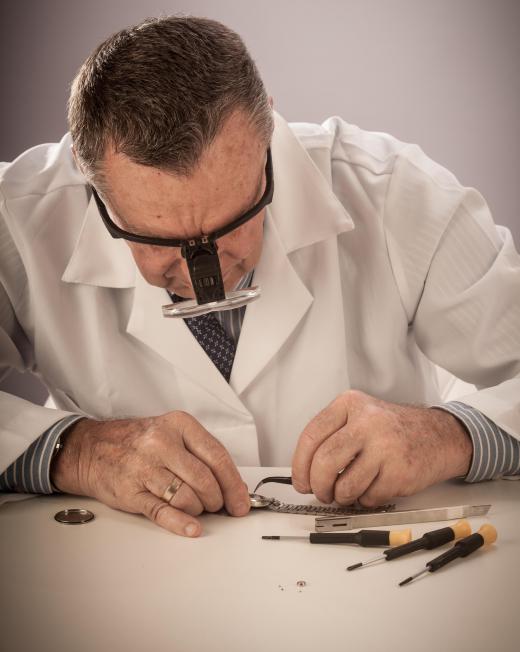Ultrasonic cleaning is a method of cleaning that uses an ultrasonic device, or a sonicator, to clean delicate objects or items with intricate parts. The ultrasonic device uses a special cleaning solution and high frequency sound waves to clean the items. Ultrasound ranges in frequency from about 20 to 400 kHz, but most industrial cleaners operate between about 40 and 80 kHz. Ultrasonic cleaning is employed in a variety of industries and can be used on many materials and objects of varying sizes and shapes.
The medical, pharmaceutical, engineering, automotive, printing, sporting, marine and electroplating industries all benefit from ultrasonic cleaning practices. Disk drive engineering and even the weapons industry use this type of cleaning as well. Items that commonly are cleaned using ultrasound include watches, coins, fountain pens, jewelery, lenses and associated optical parts, dental and surgical instruments and industrial and electronic equipment. An ultrasonic cleaning device might be used in a watch shop, at a jewelery workstation or in an electronics repair business to clean objects and to remove debris from them.

Cleanings can be very intricate, so using ultrasonic cleaning can reduce or eliminate the need for harsh cleaning agents. Selecting an appropriate aqueous cleaning solution for the item to be cleaned can achieve comparable or better results than harsh chemicals. The solution chosen plays an important role in the cleaning, because different solutions are appropriate for certain items, and ultrasound itself will not successfully clean an item. Cleaning solutions are to be used at a warm temperature, somewhere between 122 and 149 degrees Fahrenheit (between 50 and 65 degrees Celsius).

To clean an object using ultrasound, users first must pick a suitable solution depending on the object to be cleaned. Then, they have to place the solution inside the device along with the item. High frequency sound waves will then begin to manipulate the solution and cavitation bubbles will rise because of the movement. This process allows the solution to reach fine cracks, blind holes and other hard-to-reach corners of an object. The result is that dirt, dust, oil, grease, pigments, soot wax and more can be removed from the object effortlessly.

Ultrasonic cleaning can be used on objects of varying sizes, shapes and compositions. Aluminum, stainless and mild steel, brass, copper, wood, alloys, rubber, plastic and cloth all can be placed in an ultrasonic cleaning device. In addition, this type of cleaning does not necessitate a tedious dissembling or reassembling of parts. Objects simply can be placed into the device and retrieved as whole pieces. If an object is especially soiled or requires more cleaning attention, higher frequencies can be used, because they produce better cleanings.
